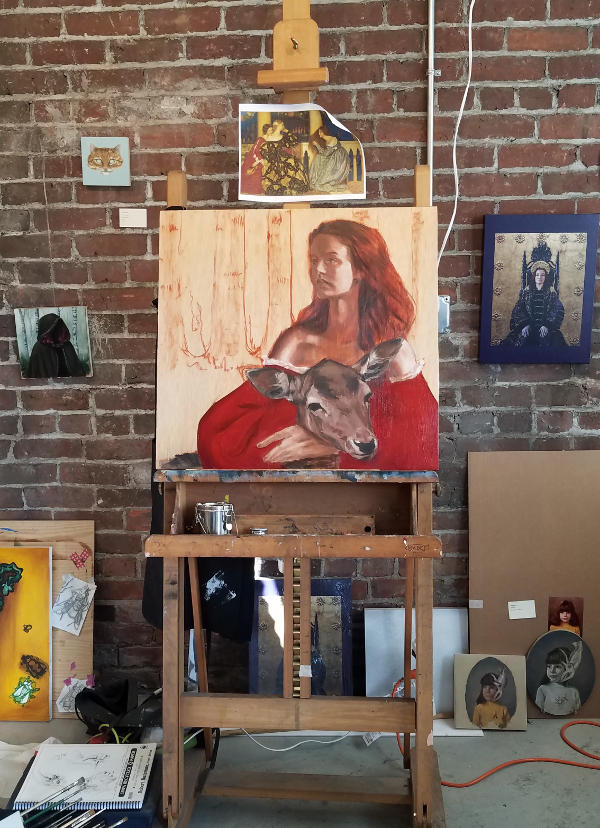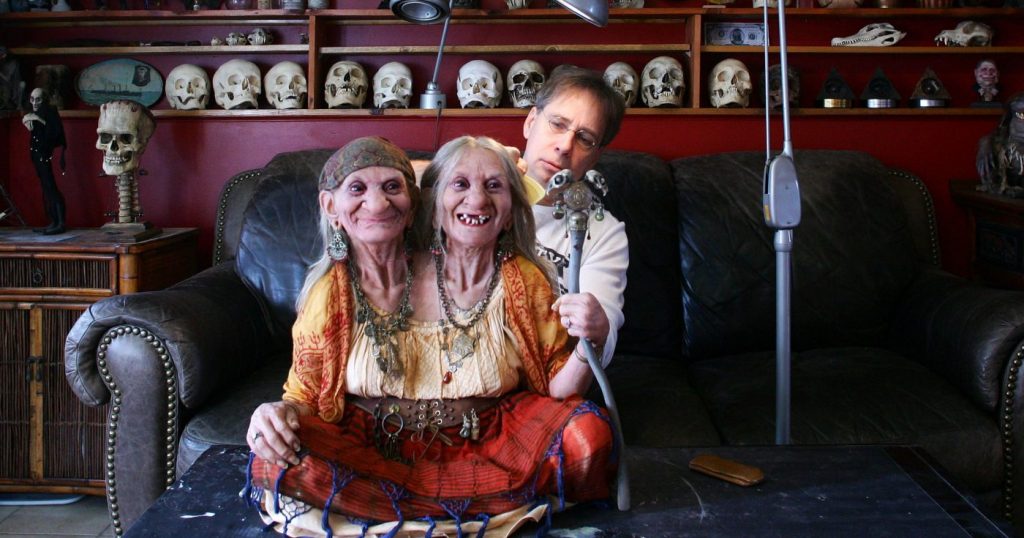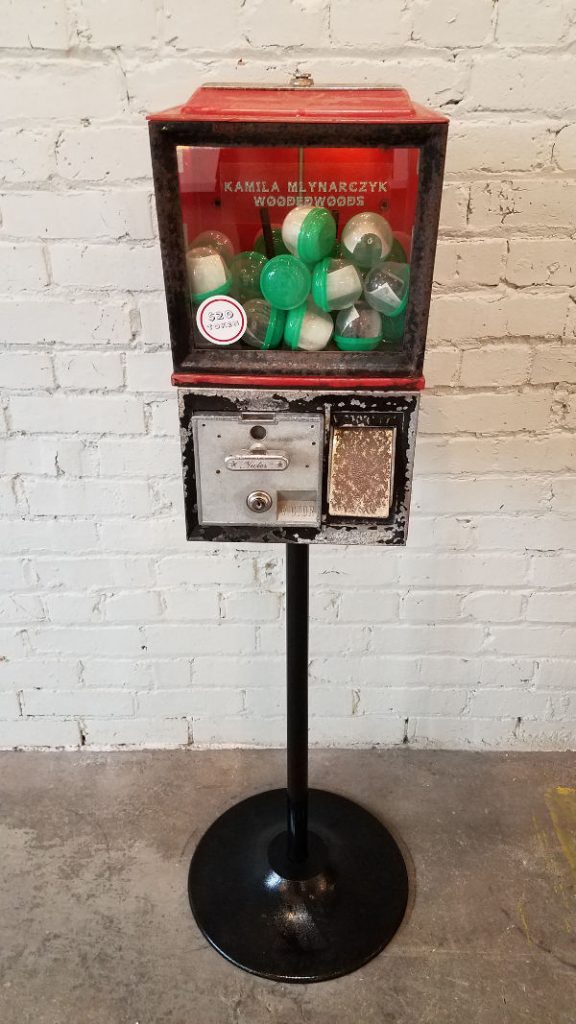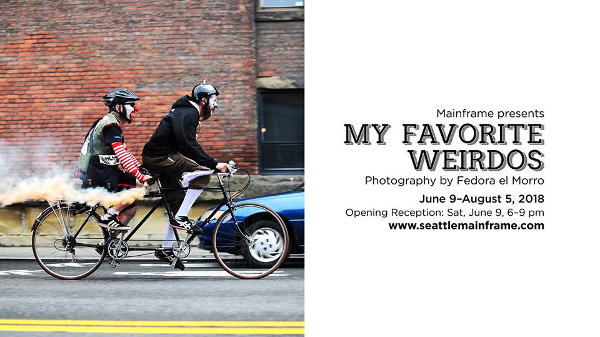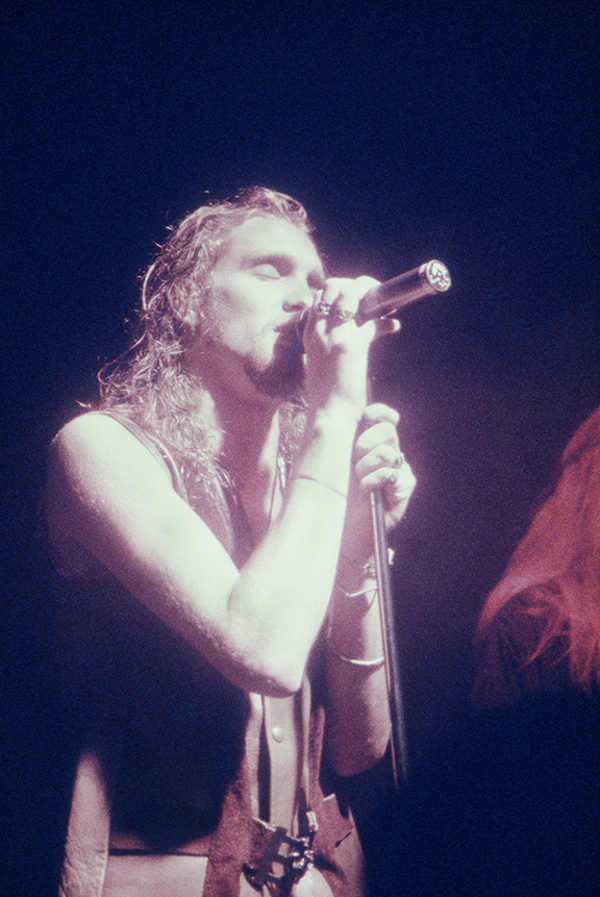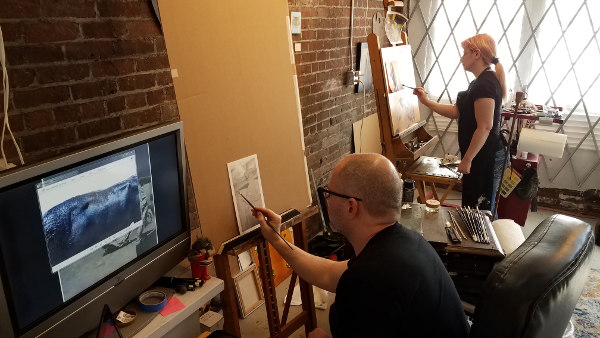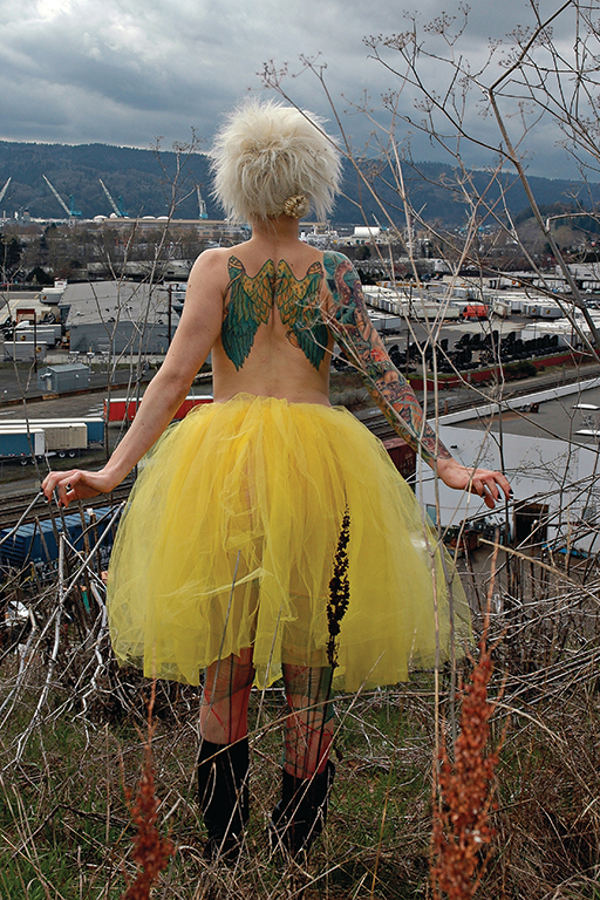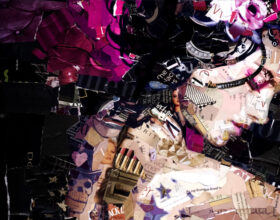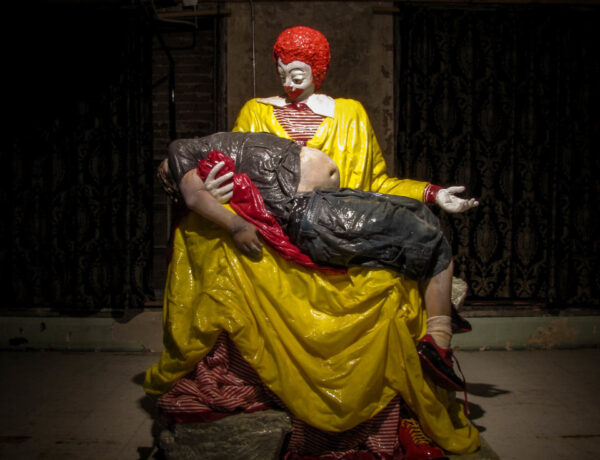Seattle’s art studio extraordinaire Krab Jab Studio has been mysteriously elusive of late, leading to whispers in the night as to what its future holds…
Having exhibited many well-respected artists including Stephanie Law, Bastien Lecouffe Deharme, Allen Williams and Yoann Lossel, Krab Jab has constantly worked to bring audiences the best of imaginative realism, exploring its depths through all of the genre’s mediums and emotions. I decided to interview Krab Jab Studio’s co-owner Julie Baroh to find out more about her upcoming plans, both personally as a professional artist and for the artistic space.
Julie Baroh – WIP
So Julie, you initially co-founded Krab Jab Studio as an art space for you and fellow artist Kyle Abernethy before the venue grew to take on more artists in residence, and then into a gallery space. Krab Jab’s been pretty much in the heart of imaginative realism on the West coast – how does it feel to have helped create something so significant to supporting the ongoing growth of Seattle’s art scene?
It’s been a bit of a trip, looking back! When we started hosting shows at Krab Jab about eight years ago, it was mainly because we were part of our neighborhood’s art walk, and the four of us who worked there didn’t have enough art to fill the walls, so we invited our friends to show. It just so happens that Seattle is thick with illustrators, especially in the game industry. Former resident artist Mark Tedin and I both have illustration backgrounds, so it was easy to find fellow illustrators willing to show some of their work to the public.
Although Roq La Rue was also in Seattle, there was little opportunity to show illustrational art anywhere here, except maybe a coffee shop or a convention. The public really seemed to enjoy seeing the art, and the turnout was growing by the month. Additionally, the word got out that there was this little funky gallery in Seattle willing to show illustrational art and truly, finding people to show wasn’t all that difficult. I didn’t ever intend to run a gallery, it just sort of happened. It was truly an organic experience! I had to learn the ropes very quickly – even with curation experience, keeping gallery doors open is a type of business venture that is not exactly intuitive or cookie-cutter.
Now there have been a lot of changes recently, including you guys taking on a bespoke framing shop Mainframe. When I saw your recent advertisement in Issue 021 of Beautiful Bizarre Magazine exclaiming ‘Krab Jab Studio: 2011 – 2018. R.I.P….?’ I have to admit I was worried! You’ve already proven your motivation and ability to keep adapting to the changing art climate, so – what’s next?
Well, first thing is a well deserved break for Kyle and myself! We’re taking a few months away from Krab Jab business in order to breathe, sleep, and do a little painting. We wrapped up our last gallery show in April, and we’ve passed the gallery space off to the Mainframe frame shop, which will host local Seattle artists and photographers in a variety of genres. We’re also investing into our other brick-and-mortar venture called the Artcade, which will reside in the Krab Jab Studio space too. We’re refurbishing old gumball machines that take tokens, and spits out tiny pieces of art. We’ve started this off with Kamila Mlynarczyk Woodedwoods and it’s been such a hoot, people love her little tiny drawings! We will also finish up our fortune telling machine, which is comprised of Tom Kuebler’s sculpture “Adelpha and Her Sister”, and I just had artist Drew Tucker build a puffer fish aquarium out of old wine barrels. The Artcade is meant to be fun an interactive and relatively self contained.
Tom Kuebler with Adelpha and Her Sister
The Artcade sounds absolutely fantastic – I’d love to rent that space for a special occasion (just imagine a mad tea party with those creations at your fingertips)! Will the public be able to pop in on a whim or will it be appointment only?
People can always come by during our open hours, which are Wednesday – Sunday, 11-6 pm, and during art walk hours which are every second Saturday, 6-9 pm. We haven’t quite figured out how to rent out the space for events yet, since its now under Mainframe, but we’re definitely open to it and we have all the supplies and equipment for things like parties, lectures, and classes. I’m still trying to get our new Krab Jab website up – long story, but we had to switch platforms and domain ownerships – but, The Artcade info will be listed under there.
Is there anyone else that you are planning to, or would just love, to get involved in the Artcade? I can see this turning into a long-term, ever-growing project!
God yes! Thomas Kuebler has been involved with his Adelpha sculpture residing in the space, and he and I hope to put a book together on it once its fully completed (we’ve definitely tossed the idea around). We’ve had other illustrators and artists tell us that they want a “show” with a vending machine or gumball machine, and we definitely want to invite artists to show. We’ll have two categories: miniature artists that can do work that fits into a capsule, and capsules that contain numbers that coincide to larger pieces of art. The token prices will slide for these all, so no one needs to feel like they have to do substandard art for little pay.
We will be creating displays for oddities, too. Taxidermy (like our Caw the Crow), and our human skull collection are two things to see, for free. There’s a pinball artist that lives nearby that I want to work with; he creates art out of old pinball machines. Artist Drew Tucker is finishing the touches on a special puffer fish aquarium, made of recycled wine barrels. You can feed the fish (they hunt snails), and they’ll tell your fortune for you by “picking” fortune squares on the aquarium glass. The aquarium will be up and running in less than a week, and everything else will install over the next few months. Caw currently serves complimentary “cawfee” to our guests.
Oh, and on art walk, we have our wonderful tarot reader, Iya Falana, reading cards at the space. She often uses the popular Stephanie Law tarot set, among other sets.
Kamila Mlynarczyk’s gumball machine, part of The Artcade
One of Kamila Mlynarczyk Woodedwoods’ original miniatures from her machine, “Hairy Girls and Ghosty Pals”
That’s a lot going on!
It is! Kyle also has a painting atelier running through Krab Jab Studio; he teaches classical painting techniques to students through an evening course. As for curation, I still plan on curating on a freelance level, not tied to a space. We don’t want to completely leave the art management world, but we both realized there’s a glass ceiling for galleries and what we want to attain, which is ultimately to connect artists to their collectors, and get new and experienced collectors excited about what’s out there in the art world. We’re tossing around business structures for art fairs here in the Pacific Northwest as one option, but if there’s anything I’ve learned all these years, its to take it slow and get the structure and foundation laid out. I don’t want to burn out too fast!
The relationship between artists, collectors and galleries has certainly shifted over the years; the internet has caused the greatest shift in the control of communication and accessibility witnessed in the whole of human history and now artists can promote their artwork direct to the masses. How did this affect your evolution as a gallery owner?
There’s a delight in bypassing the middle-person to get direct access to artists, and vice versa with collectors, and this is great if the overarching goal is to make money. However, a few things are lost in this kind of business model, namely, the art is never viewed by anyone but the artist and collector. It never gets a moment to breathe, for the public to see it, and ultimately this is a huge loss to the art community. The second loss is good business practices: gallerists are good at editing, marketing, storytelling, reading people, and negotiation. That’s our job: sell the artist, the vision, the show, the objects in such a way that the artist may not be prepared for or do all that well. We provide a service, on top of organization skills, documentation skills, a space to show in, a bankroll to market with, and a built-in audience.
Ironically, a lot of my collectors didn’t want to deal in business with the artists. They didn’t want to haggle over things, or worry about how shipping, framing, etc would pan out. They liked the mystique aspect of the artist to stay that way, and the business side of things to be divorced of the creative energy behind the work they they fell in love with. But new collectors are introduced to collecting nowadays via the internet or conventions and many have yet to go through a good gallery experience. There are still great galleries out there of course, but clearly not enough.
Last year you took over the frame shop Mainframe, which signalled a change in your focus as you expanded beyond the gallery. This was a pretty huge endeavour, but it seems to be paying off well! How have you found the last year?
Mainframe is filling a much needed niche, as many custom shops (and at least one chain shop) are getting hit with hard times and closing. It definitely pays the rent, but more so, we have been able to give people easy access to high quality framing and display options, including art conservation, which we do in-house and also with a third party affiliate. The downside is that I’m easily our best customer! *laughs*
We’ve started putting together a workshop for artists and students, to train them on basic material and technique applications, as well as teach how artists can budget the time and money of display into their projects. I really wish I knew all I’ve learned in the last few years, in regards to my own work and framing.
It’s great to hear that local Seattle artists and photographers will still have a place to be exhibited through Mainframe. Will you continue to focus primarily on illustration, fantasy and imaginative realism, or will 2018 mark audiences seeing even more genres promoted within your space?
Actually we’re expanding to include other genres, with the focus on local talent. Because we’re a frame shop, a major point in showing is to have us frame the work, but so far no one has balked over that. The artists get a pretty great deal in framing, from anyone’s standpoint.
We’re keeping steady to work that is high quality and engaging, no matter the genre. For example, the show opening up this month is by local photographer Fedora el Morro, who is doing a body of work surrounding the quirky Seattle characters she’s worked with along the backdrop of our crumbling urban architecture, particularly the south side, where Krab Jab Studio happens to be. In August, we’re doing a retrospective of photographs by Paul Hernandez during his Seattle Grunge period of 1989-1993, when he photographed many of the Seattle music giants both on and offstage. Both Fedora and Paul are incredibly picky about how their work is presented, and there is a clear narrative to the body of works, so I believe that our Krab Jab Studio visitors will find both these Mainframe shows and our future shows totally worth attending, even if they aren’t imaginative realism.
Paul Hernandez, “Layn Staley of Alice in Chains, Central Tavern 1990”, part of “Star Gazing: A Paul Hernandez Retrospective” (opens August 11th)
Both you and Kyle are professional artists; that must have been difficult to balance between running Krab Jab and Mainframe, but do you think this factor has strengthened how you ran the two businesses?
I had to put aside my art career to fully run Krab Jab Studio, which for most of the years I did as sole owner. As most artists know, you can only go for so long before you start feeling that weird soul-death of not working. I have had to put aside many ideas for pieces over the years.
However, yes, being an artist has strengthened the experience. I definitely understand the artist’s fears, the way they tend to procrastinate, and why they do so, so my patience with oddball behavior is probably greater than most. I also understand how to coax storylines and themes out of them, because we wax poetic in a similar manner. I think many of the artists I worked with really trusted that I had their best interests at heart with their work and career.
Kyle Abernathy and Julie Baroh in the Krab Jab Studio
You mentioned that Kyle has a painting atelier running through Krab Jab Studio – will this be continuing into the next phase of the Krab Jab/Mainframe venture? Will Krab Jab Studio even continue to exist? And do you have any similar plans in the pipeline as part of your endeavour to rekindle your fire as an artist/illustrator??
We’re actually coming full circle; Krab Jab Studio WAS originally just me and Kyle working at our easels/drafting tables, before we added more artists and eventually the gallery part. So bringing the painting studio back into the space is full-on all about us, who we were and are. And our visitors love it, they love feeling like they’re peering under the hood by us keeping our working space open and accessible. Every month they come back to see what new things we’re doing, how far we’re getting with projects. The atelier is part of the Kyle (“Krab”) package, he loves to teach and his students are pretty devoted to him. Its part of our interest in education, which we’ve always actively been about. I am not as interested in teaching art making, I am more of the curator/professional development advisor, and I do consultations for this, although I don’t actively advertise it.
My plans are a little loose at this time, with my art. I’m currently working under a mentorship with artist David Gray, and we’re filling in technical gaps in my painting. I did do some work for Valve’s DOTA2 game, “Artifact”, that’s not yet released, but I think that’s the extent of illustration for me right now. I have a few upcoming shows in Europe, through Dreams and Divinities. My desire to be a big famous artist is much less these days – its a much bigger win to be able to get a couple of days to paint vs plot out my future as an artist. Today, for example, I have a few hours to hit the easel, but with Addison’s Disease, I can’t pull the same hours I did when I was younger, so if I can get a couple hours in, yippee. Time will tell on the rest.
“Yvette Endrijautzki” by Julie Baroh – mixed media on Duralar
Fedora el Morro, “Fly”. Part of the “My Favorite Weirdos” show, opening June 9 – August 5th at Mainframe.
Have there been any moments over the years where you’ve thought: what the hell am I doing?!
Ha! Always, every day! Every day is an adventure. I never know if I’m doing anything the right way, or best way. I’ve made some whopping mistakes over the years, but I’ve never been one to shy away from a challenge, and the main takeaway is that tomorrow is a new day, all fresh and ready to be lived. Life really is a fun, funny thing!
What do you think is going to be your biggest challenge over the next year, and what are you most excited about?
After our break from Krab Jab, Kyle and I will be back to work on the business structure of things. We have a huge amount of work to tackle with that! Rewriting our business plan is our first main job, then we have to decide how we’re going to move forward with our ideas, one of which is to develop the structure for a West Coast art fair that caters to imaginative realism AND to my hometown, Seattle. We are geographically in a really unique place, and I want to take advantage of that. We also have really unique people here in this town, and a ton of talent. Lots of sticks to rub together!
For Mainframe and The Artcade, I look forward to see how those grow on their own. Kyle and I will always be upping our frame game, but how the space is managed and used, I’m really open to the different directions. I just want people to enjoy themselves when they visit.
For my own artwork, getting a good rhythm going is vital. Working alongside Kyle is fun, I love the comradery of it. We have people come by to join us drawing or painting once a week, which is like alchemy for me, I love that! We’ve joked about having a live feed running during that day, so illustrators and artists can tune in and pretend they’re in the same room and not feel so isolated. I know it helps me to keep working when there are others around.
Other than that, no firm plans. Just paint.


